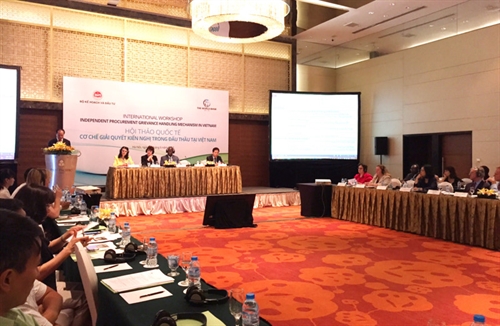Bui Duc Giang, LL.D[1]
One way for credit institutions to generate revenues is charging interest and fees on loans they provide. On December 30, 2016, the State Bank of Vietnam issued Circular No.39/2016/TT-NHNN regulating lending activities of credit institutions and foreign bank branches (Circular 39) which took effect on March 15, 2017. This text sets forth new rules relating to rates of interest and fees in lending activities.
Interest
Rates of interest
Article 91.2 of Law No. 47/2010/QH12 on Credit Institutions dated June 16, 2010 (the Law on Credit Institutions) provides that “a credit institution and its customers have the right to agree, in accordance with law, on interest rates [...] during the banking operations of the credit institution”.
Article 13.1 of Circular 39 further prescribes that “a credit institution and its customers shall agree on loan interest rates on the basis of market supply and demand of funds, need for loans and creditworthiness of the customers, except where the State Bank of Vietnam sets out a maximum loan interest rate [...]”.
As such, in principle, the loan agreement may specify the interest rate. Article 13.2 of Circular 39 stipulates that “a credit institution and its customer shall agree on the interest rate for a short-term loan in VND which must not exceed the maximum loan interest rate decided by the Governor of the State Bank of Vietnam from time to time when the loan is to meet any of the following needs for funds:
(a) serving the sector of agriculture and rural development in accordance with the Government’s regulations on credit policies to serve agriculture and rural development;
(b) implementing a plan on export goods trading as stipulated in the Commercial Law and implementing guidelines;
(c) serving business operation of a small- or medium-sized enterprise in accordance with the Government’s regulations on assistance for development of small- and medium-sized enterprises;
(d) developing a support industry in accordance with the Government’s regulations on development of support industries;
(e) serving business operation of an enterprise applying high technology in accordance with the Law on High Technology and its implementing guidelines”.
It should be noted that Article 91.2 of the Law on Credit Institutions expressly states that the rates of interest shall be agreed “in accordance with law”. The relevant regulations may include not only Circular 39 but also the Civil Code. The problem is that in its section relating to lending of property (Articles 463 thru 471), the Civil Code provides for caps on interest rates and therefore conflicts with Circular 39. Indeed, Article 468 of the Civil Code provides as follows:
“Article 468. Interest rates
1. The rate of interest for a loan shall be as agreed by the parties.
Where the parties agree on the interest rate, such agreed rate must not exceed 20% per annum of the loan, unless otherwise provided by other relevant laws[2]. Based on the actual circumstances and as proposed by the Government, the Standing Committee of the National Assembly shall make a decision on adjustment of the interest rate mentioned above and make a report to the National Assembly at the next session.
Where the agreed interest rate exceeds the interest rate cap provided in this Clause, the excessive interest rate is ineffective.
2. Where the parties agree that interest will be charged but fail to specify an interest rate and there is a dispute as to the interest rate, the interest rate shall be equal to 50 % of the interest rate cap provided in Clause 1 of this Article as from the date on which repayment is made”.
It appears from Article 468 of the Civil Code that the above caps will apply unless otherwise provided by a relevant law. It is expected that future amendments to the Law on Credit Institutions would clarify that point.
Method of computation
Pursuant to Article 13.3 of Circular 39, “particulars to be agreed upon with regard to the interest for a loan must include both the interest rate and the method of calculating interest on the loan. If the interest rate is not convertible to a rate per annum and/or the method of calculating interest on the actual loan balance or term for maintaining such balance is not applied, then the loan agreement must contain a provision on the loan interest rate convertible to a rate per annum (with one year having 365 days) calculated in accordance with the actual loan balance and the term for maintaining such balance”.
As such, the basis for computing annual interest is 365/365. By this method, the annual rate of interest will be divided by 365 to produce a daily interest factor. The number of days when the loan is outstanding is then multiplied by this factor. Therefore, different amounts of interest will be charged for months of different lengths.
The loan term[3] must be taken into consideration when computing interest. Under Article 2.8 of Circular 39, the “loan term means the period of time calculated from the day following the date on which the credit institution disburses the loan to the customer up until the date on which the customer must fully repay the loan principal and interest as agreed upon between the credit institution and the customer. If the last day of such loan term falls on a public holiday or weekend, then the last day shall be deemed to be the following working day. If a loan term is less than one full day, then the provisions of the Civil Code on the time of commencement of the term shall apply”.
With regard to the last point of the above provision, Article 147.1 of the Civil Code stipulates “where a time limit is stated by reference to minutes or hours, it shall commence from the stated moment of time”.
 |
| Customer transactions at Hai Phong branch of BAOVIET Bank__Photo: Tran Viet/VNA |
Repayment
As for repayment, as per Article 18.1 of Circular 39, “a credit institution and its customers shall agree on periods for repayment of principal and payment of interest of a loan as follows:
(a) separate periods for repayment of principal and for payment of interest;
(b) the same period for repayment of principal and payment of interest”.
In principle, the credit institution and the customer may agree on the order of recovering principal and collecting interest; but with respect to overdue debts, the credit institution is obliged first of all to recover the outstanding principal and thereafter collecting the outstanding interest on the loan (Article 18.4 of Circular 39).
Credit institutions’ right to vary interest rates
Some loans may carry a fixed interest rate for their entire term or for a period of such term. However, a loan agreement may state that the interest rate is variable throughout the loan term. This helps to ensure that the bank’s cost of lending is embedded in the interest charge. The loan agreement usually gives the credit institution the right to vary the interest rate in case its base rate (e.g. a specific time deposit interest rate) varies.
Article 13.5 of Circular 39 provides that “if a floating interest rate is applicable to a loan, then the credit institution and the customer must agree on the principles and factors for determining the floating interest rate and the point of time at which it applies. If application of such factors for determining the floating interest rate results in different interest rates for the loan, then the credit institution shall apply the lowest interest rate”.
Default rates of interest
It is common for loan agreements to specify a default interest rate which is a higher rate to be applied after the borrower’s default.
Under Article 466.5 of the Civil Code, if a borrower fails to repay, in whole or in part a loan with interest, the borrower shall pay interest as follows:
· To pay interest on the principal which is due and unpaid at the interest rate agreed in the contract for the period of the loan term for which the loan was not repaid when it became due; in case of late payment, the borrower shall also pay interest at the rate of 10% per annum;
· To pay interest on the overdue outstanding principal at a rate equal to 150% of the loan interest rate stated in the contract for the period of late payment, unless otherwise agreed.
Likewise, Article 13.4 of Circular 39 provides that “if on maturity for repayment, the customer has not yet repaid or repaid in full the loan principal and/or interest as agreed, then the customer shall pay the loan interest as follows:
(a) interest on the principal debt at the loan interest rate agreed, and corresponding to the period of the loan term for which the loan was not repaid when it became due;
(b) if a customer fails to pay on time the interest prescribed in sub-clause (a) above, he shall pay interest on late payment at the rate agreed upon with the credit institution but not exceeding 10% per annum calculated on the outstanding amount of interest for late payment for the period of late payment;
(c) if the debt is categorized as an overdue debt, then the customer shall pay interest on the overdue outstanding principal debt for the period for which payment was late, and such interest rate must not exceed 150% of the interest rate applied at the time of categorizing the debt as an overdue debt”.
With regard to sub-clause (c), Article 2.11 of Circular 39 defines an overdue outstanding principal debt as:
· the outstanding balance of principal which is transferred to the overdue debt category; or
· the outstanding balance of principal which the customer has not yet repaid prior to maturity in case the credit institution terminates lending and makes early recovery of the debt.
Fees in connection with lending activities
Article 14 of Circular 39 provides for fees that a credit institution is entitled to collect when lending. Such fees include:
· Prepaid fee payable when a customer makes early payment of the debt.
· Fee for a standby credit line facility[4].
· Arrangement fee in a syndicated loan[5].
· Fee for an undertaking to withdraw funds as from the effective date of the loan agreement up until the date of the first drawdown.
· Other specific fees relevant to lending activities which are specifically regulated in relevant legal texts.
The fourth category of fee should have been named “commitment fee” as the credit institution would be able only to ask the borrower to pay a commitment fee, to compensate it for committing to lend the loan for the agreed term. Furthermore, not all types of loan agreement will give rise to this category of fee. For instance, no such fee is payable in case of an overdraft facility as an overdraft is generally uncommitted.-
A credit institution may consider and make a decision on lending to a customer the following types of loans:
- Short-term loans being loans with the maximum lending term of one year.
- Medium-term loans being loans with a term of over one year up to a maximum five years.
- Long-term loans being loans with a term of over five years”.









